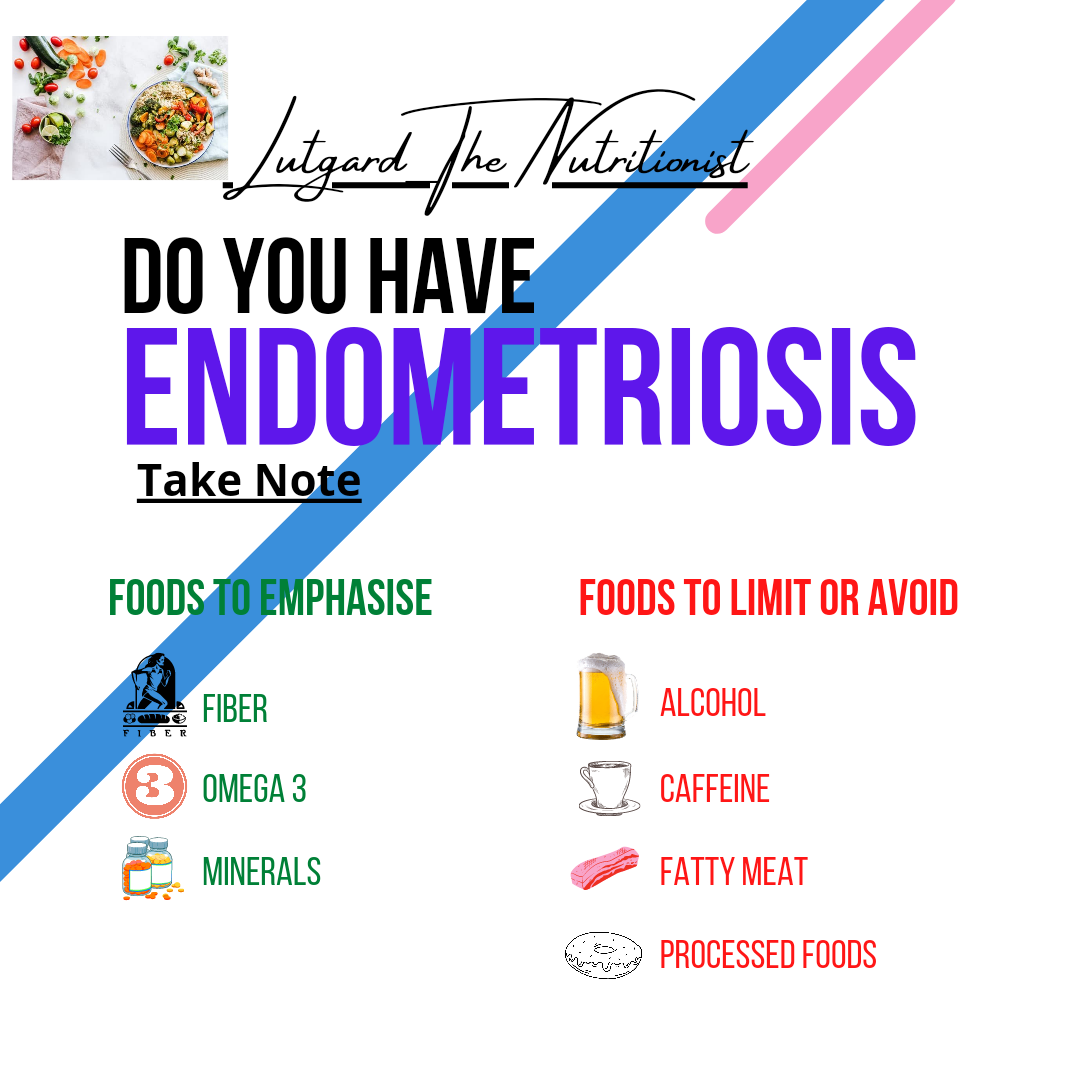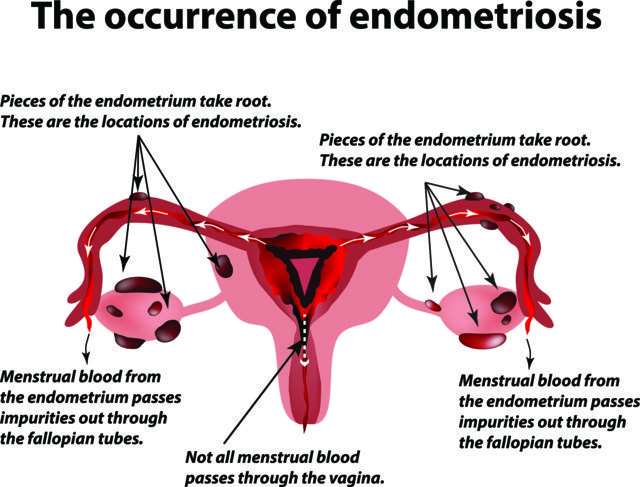
Pain medication slowly becomes the norm for people dealing with endometriosis. Anything to reduce the torture of the symptoms, not forgetting the heavy periods and nausea that always tag along is done. It is always such a distressing discourse.
If it is your first time stumbling upon this page, welcome on board. Last Wednesday I wrote about endometriosis and all one needs to know about it. If you have not read it, be sure to catch up here. I promised to return with the nutrition management of endometriosis which in my opinion is an easier way to deal with this monster, so here we are.
Nutrition management of endometriosis.
Just to backtrack a bit, I just need us to recap how endometriosis manifests. For someone with endometriosis, the cells from the endometrium (lining of the uterus) travel to other parts of the body and stick there. This could be just outside the uterus itself, in the bladder, fallopian tubes, or any other organ. During the menstrual period, the cells then try to shed blood but the blood has nowhere to go. This trapped blood from the misplaced cells causes inflammation to the nearby organs and tissues, therefore, this inflammation causes the symptoms persons with endometriosis experience as mentioned in my last article like pain, fatigue, digestive issues like bloating, and infertility in some instances.

From this background, in the nutrition management of endometriosis, our goal is to reduce inflammation so that we reduce the gravity of the symptoms. Please note this is NOT a cure but a way to make life more manageable. Inflammation and elevated levels of estrogen can make endometriosis symptoms worse so let us explore some of the foods we can emphasize and those we ought to limit or avoid.
Foods to emphasize if you have endometriosis
Fiber
This is a key food for removing excess estrogen from the body. Much as estrogen is a key hormone required for normal functioning, too much estrogen can aggravate endometriosis symptoms like cramping and pain. That’s where fiber can come to the rescue. Through stool, the excess estrogen will make its way out of your body, and besides, it is also key for a healthy bowel movement. Something to note is to go slow. Add fiber gradually to avoid the possibility of digestive discomfort like bloating.
Wondering how to boost your fiber intake? Incorporate this into your diet:
- Fruits and vegetables, try and consume the whole fruit.
- Seeds like flaxseed, chia seeds, sunflower, e.t.c. seeds are good sources.
- Legumes, like beans, peas.
- Whole grains, like whole-wheat pasta and brown rice. (If wheat gives you trouble, do not take it)
Minerals
Minerals like calcium, magnesium, and zinc are known to be important in relieving pain. Minerals especially magnesium is called natural muscle relaxer. Zinc is important for regulating the menstrual cycle, which is important for hormonal balance. Zinc helps the body to ovulate, or release an egg and when ovulation happens, progesterone is released which balances out estrogen.
Sources of magnesium include;
- Leafy greens, like nakati, amaranthus (dodo), dark lettuce, kale, and spinach.
- Legumes, like beans and peas.
- Nuts and seeds, especially almonds, cashews, and pumpkin seeds.
Sources of zinc include;
- Poultry, like chicken or turkey.
- Red meat, but a limit of two low-fat servings per week is advisable.
- Shellfish, like oysters, crab, and lobster.
Omega 3 and monounsaturated fats
Omega 3 and monounsaturated fats have an anti-inflammatory effect which is important in reducing inflammation thereby making the symptoms better.
Sources of Omega 3 include;
- Fatty fish, like salmon.
- Nuts and seeds, like walnuts, chia seeds, and flaxseed.
- Plant oils, such as flaxseed oil and canola oil.
Sources of monounsaturated fats include;
- Avocadoes.
- Nuts and seeds.
- Olive oil.
- Peanut butter.
- Safflower oil.
Foods to avoid or limit if you have endometriosis
- Alcohol
- Caffeine
- Fatty meat
- Processed foods
- Sugars
Bonus;
Many endometriosis people suffer from an array of digestive issues. If you are one of those, reach out to a dietician and a plan will be made to see how to help you.
This journey can be a lonesome one. Some women even feel less of women but I want to assure you that you are not alone. We will continue to share as much information as there is so that we can help one another.
To all my endo sisters, hang in there, with the right help, it will get better.
See you next Wednesday.


This is good Lutgard.Thanks alot
Thank you Brenda for reading my dear
This is helpful
Thanks Lutgard
Thank you Justine, always